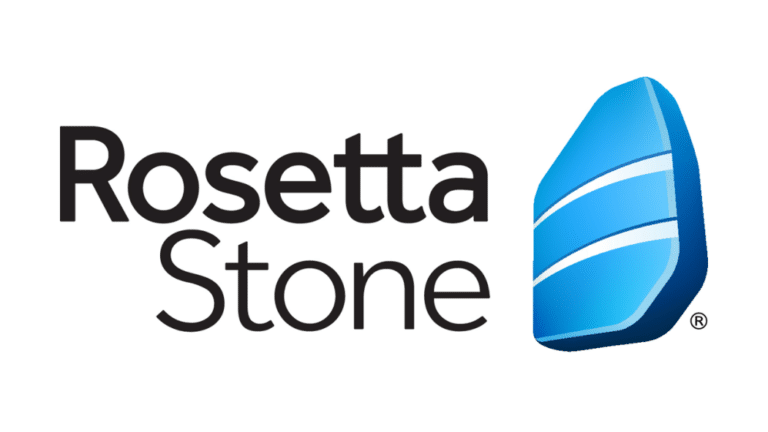Learning a language has never been an easy journey, but surely an exciting one. And when it comes to a language like Spanish, it can be more exhilarating and challenging!
Rosetta Stone is a prominent name in the realm of language learning software. It was initially released in 1992 and is one of the pioneering software for learning languages. It has developed a strong reputation and also met with some criticism. However, it is well-known that Rosetta Stone is a popular choice for language learners.
If you’re choosing Rosetta Stone to learn Spanish, you might be wondering: “How Good Is Rosetta Stone for Spanish?” or “Should I really opt for it?”.
In this detailed analysis, we will explore the pros and cons of choosing Rosetta Stone for learning Spanish and give you all the information you need to make an informed decision.
Vamos!
Related: Best Online Spanish Classes
What is Rosetta Stone? How Does It Work?
Before we start the review, let’s start from the basics first.
Rosetta Stone is a language learning program released in 1992. It was created to help people learn new languages with an immersive approach. This unique approach has made it a go-to tool for language learners around the globe. Their app, the Rosetta Stone app, is available on smartphones, iPads, and tablets. But what makes Rosetta Stone particularly interesting?
Instead of translating between languages, Rosetta Stone uses a combination of images, sounds, and words directly with the language that you are learning. This interactive technique helps learners to quickly adapt and develop speaking, listening, reading, and writing skills more effectively. The program offers lessons, exercises, and activities that progressively guide you through the language-learning process, making it an effective tool.
Can We Learn Spanish with Rosetta Stone?

As we stated above, Rosetta Stone is an online language learning course that uses immersion techniques to teach languages effectively.
Thus, this makes learning a language like Spanish on Rosetta Stone a green signal.
However, it is important to remember that the program doesn’t promise instant fluency. Now, let’s explore more to answer the question, ‘How Good Is Rosetta Stone for Spanish?’.
Rosetta Stone Spanish Program: Cost and Features
We begin our analysis of Rosetta Stone for Spanish review by learning about the features in the program, the costs, and the pros & cons of it.
The Rosetta Stone Spanish program has many cool features to make learning fun and effective. You’ll learn by diving right into the language, just like when you learned your first language. A clever tool called TruAccent helps you sound like a native speaker. The program also helps you remember what you learn with special exercises. It covers everyday situations like ordering food or talking about the weather.
The best part is that it’s interactive and has games to make learning feel like playing. You can even learn using their mobile app, which works offline too. So, whether you’re connected to the internet or not, you can keep learning Spanish whenever you want. All these features together make the Rosetta Stone Spanish program a great way to learn the language.
When you ask, “How much is Rosetta Stone for Spanish?” it is important to know that the cost of the program is as appealing as the features it offers.
There are these subscription ways for the program. A 3-month subscription to the Spanish program is currently priced at $11.99 per month. For those who need a longer journey, there’s a 12-month subscription at $7.99 per month, and the lifetime subscription costs around $299.
Rosetta Stone for Spanish Review: Pros
With all those features, there is a lot to love about Rosetta Stone’s Spanish program. Here are some major pros:
- Immersive Learning Experience: Rosetta Stone immerses you in Spanish. This immersion approach helps you think in Spanish, facilitating more natural and fluent conversations.
- Comprehensive Content: The program covers everything from basic vocabulary to complex dialogues, catering to a wide range of everyday situations. This comprehensive coverage ensures you’re well-equipped to navigate real-life scenarios.
- TruAccent Technology: This feature aids in perfecting your pronunciation, allowing you to sound as close to a native speaker as possible.
- Interactive and Engaging: The learning process is made fun and engaging through a variety of games and activities, lessening the feeling of it being a chore.
- Adaptive Recall Exercises: These exercises enhance language retention by repeating material at strategically timed intervals.
Rosetta Stone for Spanish Review: Cons
While Rosetta Stone’s Spanish program is highly comprehensive, it does come with a few cons. Here they are:
- No Translation: The immersive learning approach, although beneficial for many, can prove challenging for absolute beginners who might benefit from translations to understand certain complex concepts.
- Paced Learning: The program may not be ideal for those who want to learn Spanish at a rapid pace, as it focuses on a gradual, thorough learning process.
- Limited Cultural Context: While the course provides a wide range of scenarios, it doesn’t delve deeply into Spanish culture or regional dialect differences.
- Costs: While the costs are generally reasonable and offer value for money, the program might still be pricey for some prospective learners, especially compared to free online resources.
- No Live Interaction: Although the TruAccent technology aids in pronunciation, the lack of live interaction with a tutor or native speakers might limit opportunities to practice real-time conversational skills.
How Good Is Rosetta Stone for Spanish?
When it comes to learning Spanish, Rosetta Stone truly shines. The software encourages users to think in Spanish rather than translating from their native language.
You begin with the basics first, learning simple words and phrases. Then you progress to more complex sentences and conversations. This step-by-step approach is great for beginners and helps build a strong foundation in Spanish. For pronunciation, Rosetta Stone’s TruAccent technology is there to help out.
These features make the platform a good choice for beginners. It is important to put in your best efforts, improve your online learning, and stay dedicated to your learning program. It is the only way to accelerate your Spanish learning journey.
Final Thoughts
So, “How good is Rosetta Stone for Spanish?” Based on our analysis, it can be fantastic! The immersive learning, innovative tools, and all other features make this platform great for learning Spanish.
However, the foremost things are, your dedication and goals. If you are serious about learning Spanish, this can be a valuable tool. But it is not a one-size-fits-all solution. It is better to give it a try with their 3-day free trial, and if you realize their immersive learning style suits you, there’s no better option than Rosetta Stone software to kickstart your Spanish learning journey!
Frequently Asked Questions
Can you become fluent in Spanish with Rosetta Stone?
Yes, Rosetta Stone can help you become fluent in Spanish, but it requires consistent practice, dedication, and real-life interactions to achieve fluency.
Rosetta Stone’s immersive approach and interactive exercises provide a strong foundation for learning the language but becoming truly fluent involves using Spanish in various contexts, practicing with native speakers, and continuously expanding your vocabulary and conversational skills.
How fast can you learn Spanish with the Rosetta Stone?
The speed at which you can learn Spanish with Rosetta Stone depends on various factors, including your prior language learning experience, the amount of time you dedicate to practice, and your learning style.
While Rosetta Stone’s immersive approach can accelerate your progress, becoming proficient or fluent in Spanish takes time. It’s important to approach language learning with realistic expectations. Some learners might make significant progress in a few months, while others may take longer.
Consistent practice, engagement with the material, and real-world practice with native speakers are key to achieving proficiency in any language, including Spanish.
